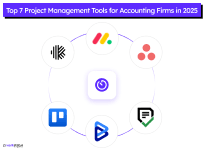Table of Contents
Managing tasks without structure is like juggling in the dark—leading to missed deadlines, unclear priorities, and inefficiency.
For project managers, this chaos results in bottlenecks, lack of transparency, and reduced team productivity.
Kanban offers a transformative solution with its visual and flexible approach. It streamlines workflows, aligns teams, and enhances productivity.
Beyond moving sticky notes, a Kanban board is a powerful framework for optimizing processes and achieving clarity.
Let’s explore Kanban methodology—its meaning, functions, business value, and practical application. By the end, you’ll master managing complexity for exceptional results.
Overview of Kanban
What Types of Projects is Kanban Best for?
Kanban is a versatile methodology that can be applied to various types of projects, but it excels in specific environments:
- Ongoing, Repetitive Projects: These are ideal for tasks like support or maintenance, providing clear visibility on pending, in progress, and completion.
- Projects with Changing Priorities: Kanban’s visual board allows easy adjustments as priorities shift, ensuring a steady workflow without overload.
- Continuous Improvement Projects: Perfect for teams focused on improving processes, identifying bottlenecks, and optimizing workflows incrementally.
- Software Development: Well-suited for Agile teams, helping manage iterative work, reduce bottlenecks, and complete tasks before taking on new ones.
- Creative and Design Projects: Helps teams track flexible, evolving tasks like designs, concepts, and approvals, ensuring smooth progress.
- Customer Support and Service Teams: Streamlines internal ticketing system, prioritizes urgent requests, and maintains a balanced flow of tasks.
What is a Kanban Board?
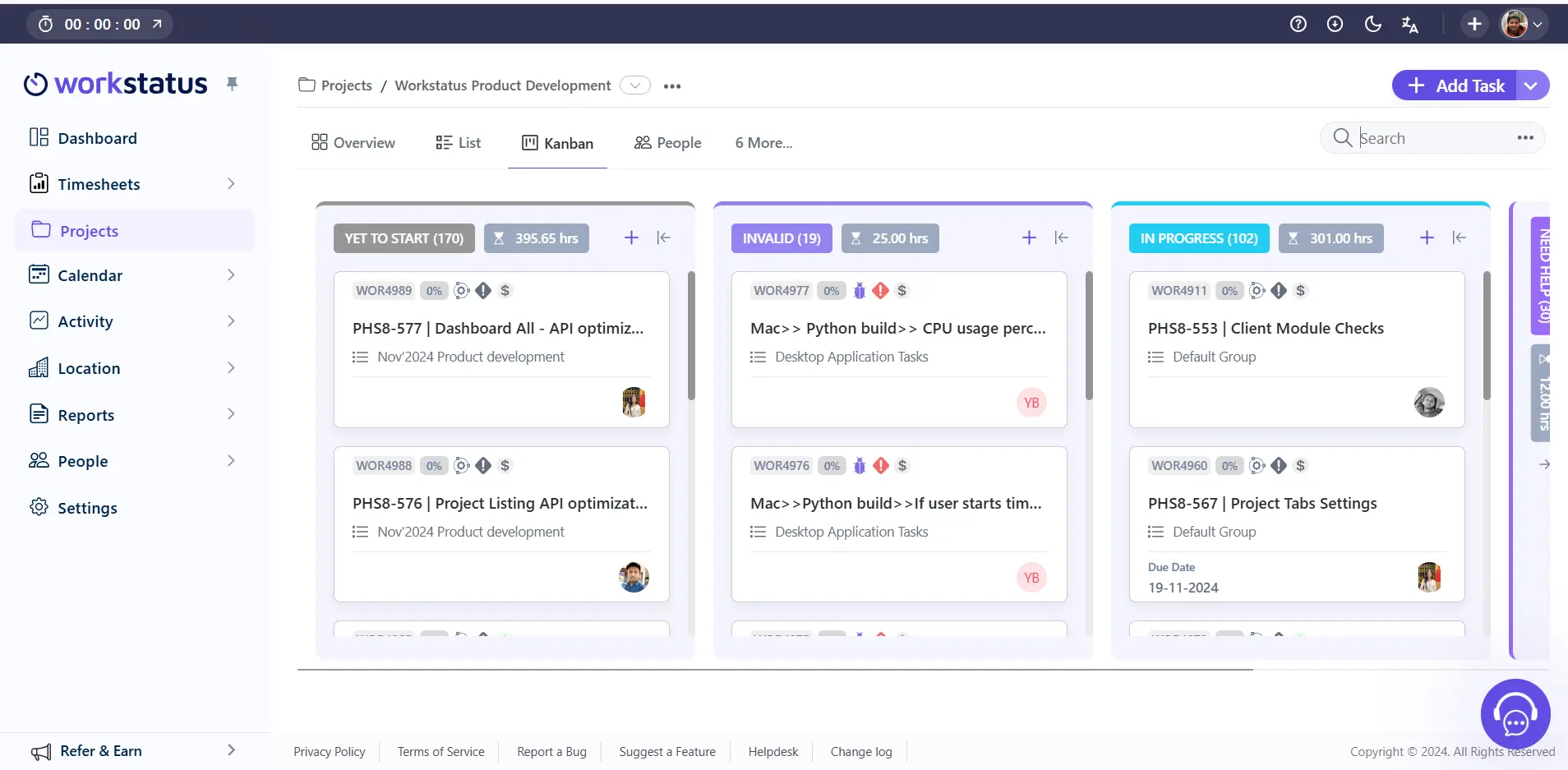
A Kanban board visualizes work and work in progress using a series of columns known as Kanban. It is one of the most essential concepts of the Kanban methodology, serving to keep the scope of work visible, control the number of WIPs, and enhance task management.
The project management Kanban board divides the process into columns containing tasks in different states. This also means getting a broad picture of what the team has done, which enables one to see where things are slowing down.
From a traditional physical board with notes on a whiteboard using sticky notes or even an online project management Kanban board with tools such as Workstatus, it allows work to flow constantly through various phases and thus enhances efficiency and cooperation among teams.
Key Elements of a Kanban Board
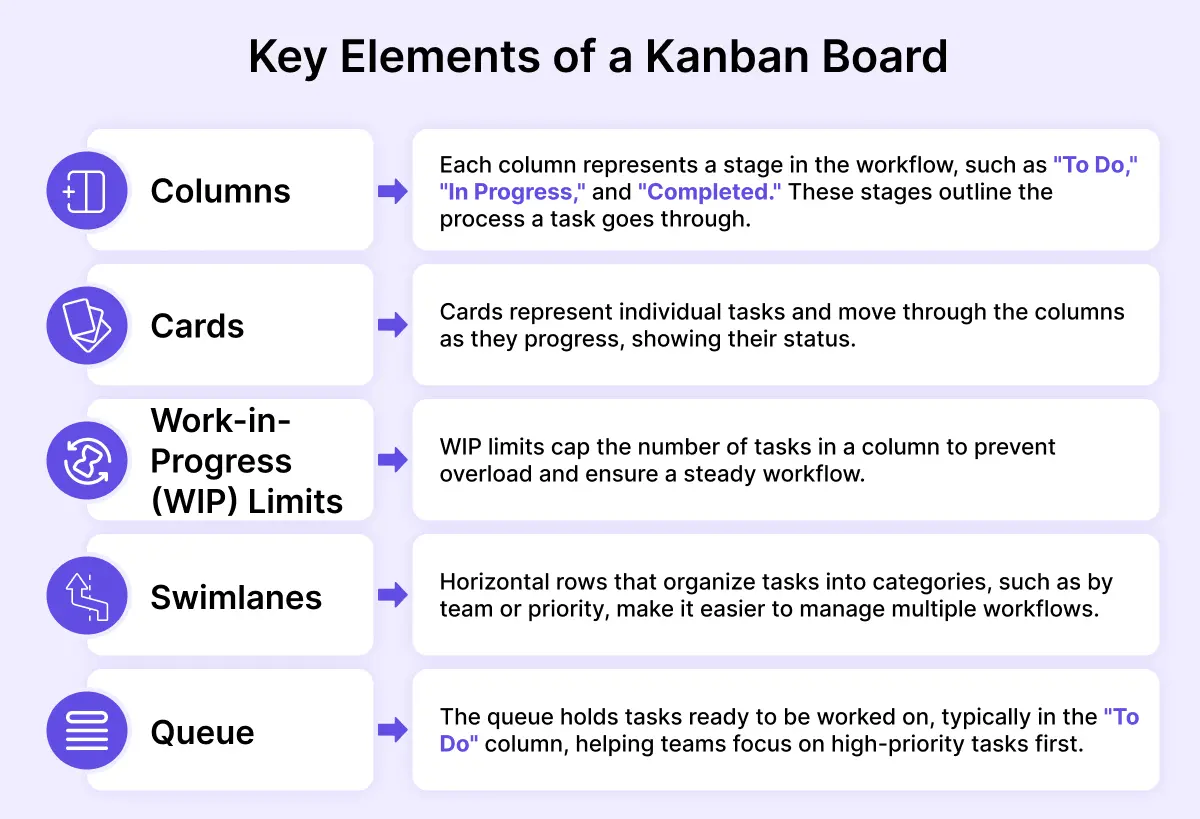
Columns
Each column represents a stage in the workflow, such as “To Do,” “In Progress,” and “Completed.” These stages outline the process a task goes through.
Cards
Cards represent individual tasks and move through the columns as they progress, showing their status.
Work-in-Progress (WIP) Limits
WIP limits cap the number of tasks in a column to prevent overload and ensure a steady workflow.
This same principle applies beyond Agile projects, for example, a WIP schedule in construction helps project managers track financial performance and ongoing tasks, ensuring projects remain profitable and on schedule.
Swimlanes
Horizontal rows that organize tasks into categories, such as by team or priority, make it easier to manage multiple workflows.
Queue
The queue holds tasks ready to be worked on, typically in the “To Do” column, helping teams focus on high-priority tasks first.
Kanban vs Other Methodologies
Comparison with Scrum
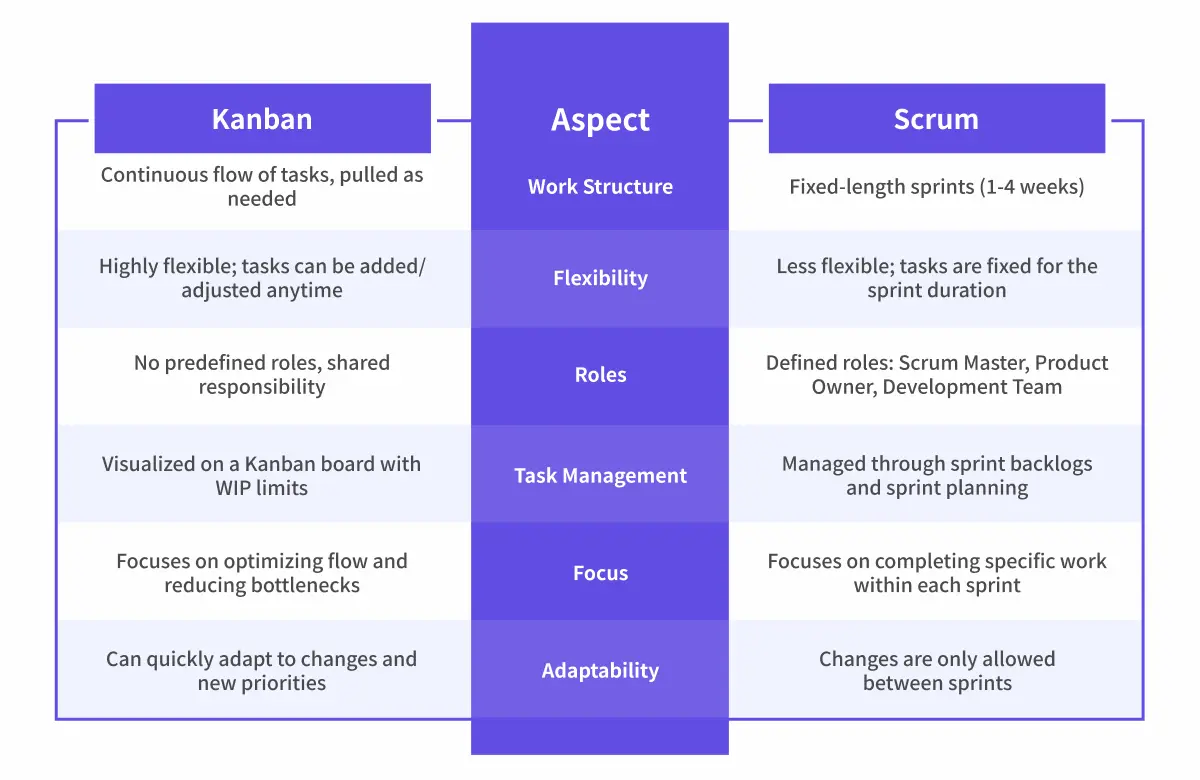
Hybrid Approaches (e.g., Scrumban)
If the teams intend to incorporate the pros of the Kanban and Scrum methods, a model like Scrumban can be helpful. Scrumban combines the elements of Scrum with the work of Kanban and its use of time-boxed sprints.
Scrumban: It is a hybrid of Scrum and Kanban. Teams keep Scrum’s structure (sprints and planning) but work on Kanban tasks, which flow continuously in a Kanban manner with WIP limits. This allows teams to deal with variable work while keeping the discipline associated with Scrum sprint cycles.
Hybrid approaches enable the teams to base the options on their requirements, making the methods ideal for situations that require a combination of formality and versatility.
Benefits of Using Kanban
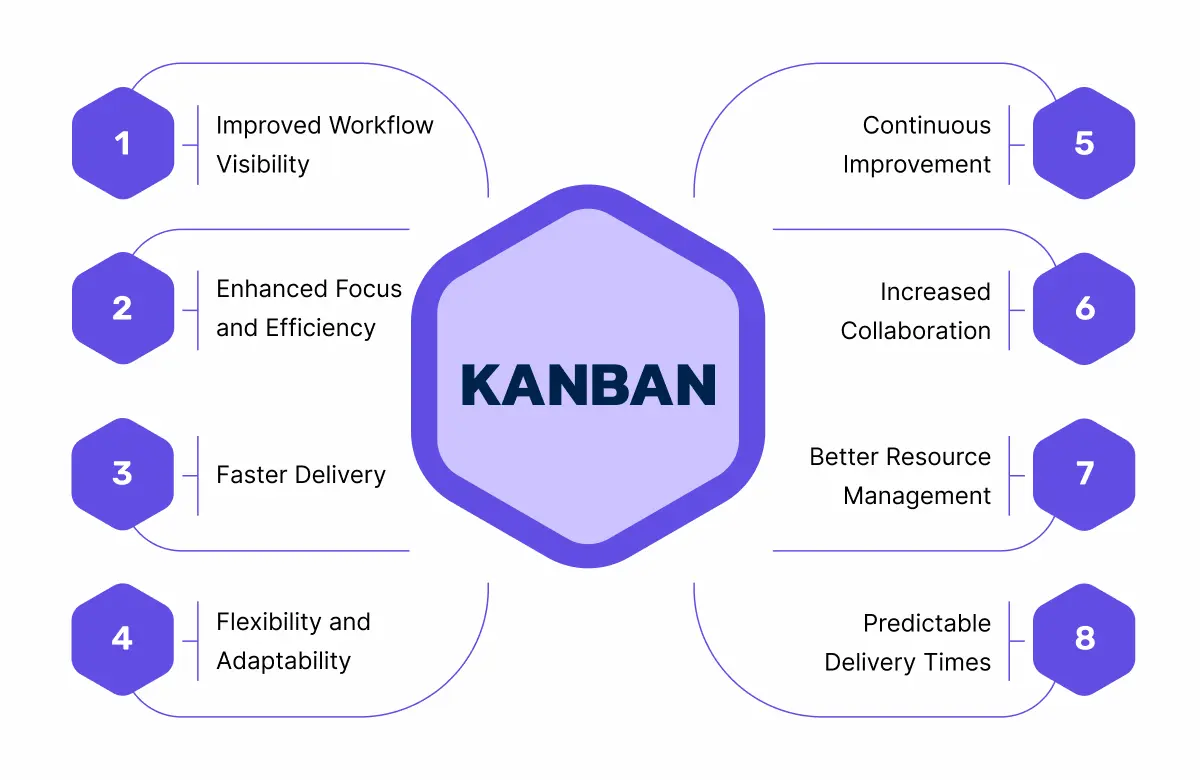
Kanban offers numerous advantages that help teams streamline workflows, increase productivity, and improve collaboration. Here are some of the key benefits of project management Kanban board:
Improved Workflow Visibility
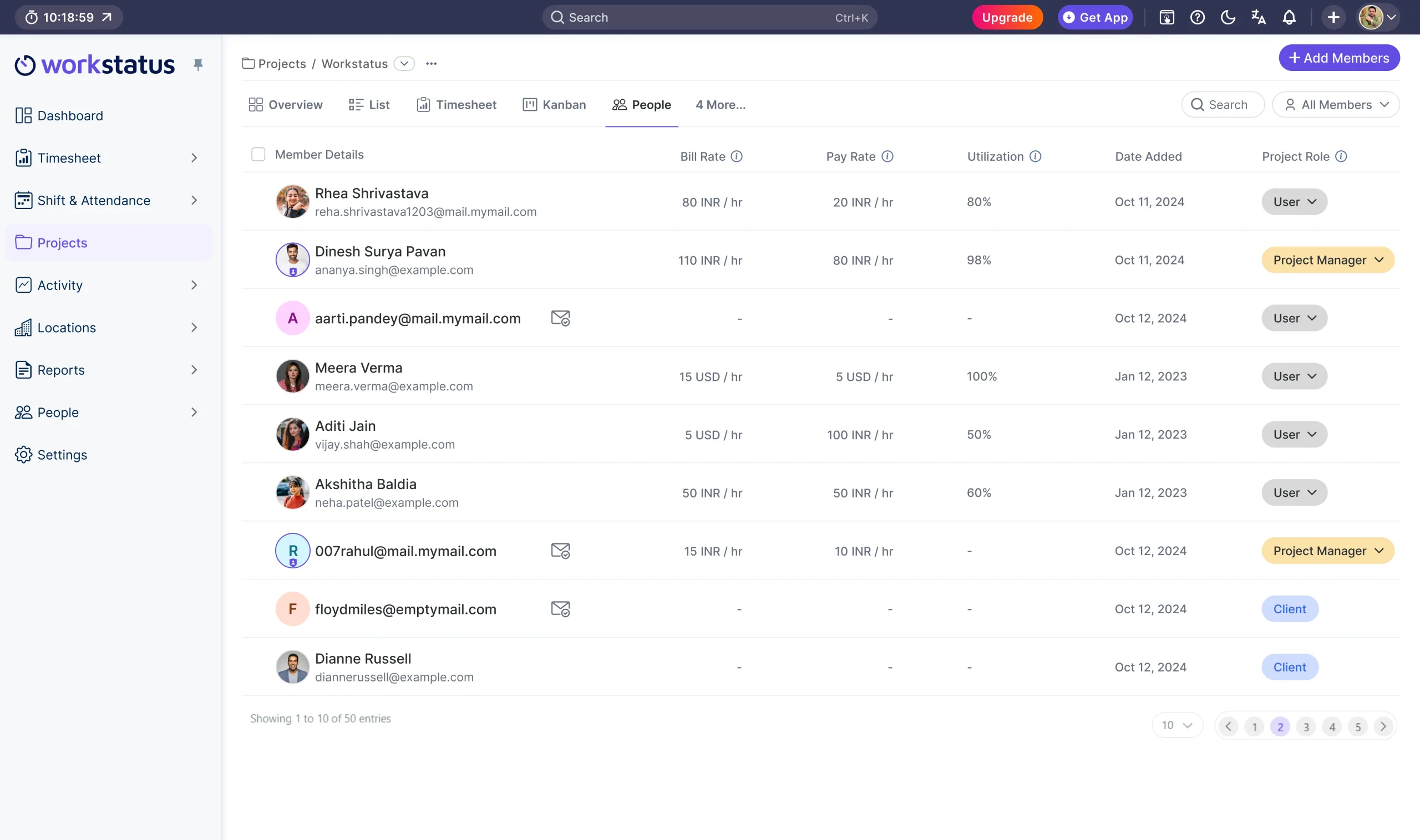
Unlike other project management tools, a Kanban board offers workers a clear visual of tasks and their progress, congestion areas, or overloaded workers.
Such transparency enables the teams to identify what is happening at a glance, preventing misunderstandings among team members.
Enhanced Focus and Efficiency
By applying WIP limits, Kanban project management allows teams to handle many tasks.
This enables a subject to work through tasks to their full completion before moving on to the next, hence reducing all the multitasking interferences.
Faster Delivery
With Kanban’s continuous flow system, tasks move through the workflow without waiting for a specific sprint or iteration.
This enables faster work delivery and helps teams respond more quickly to changes or customer needs.
Flexibility and Adaptability
Kanban is highly flexible and ideal for projects with changing priorities or unpredictable workflows.
Teams can add or reprioritize tasks without disrupting the overall process, allowing them to adapt quickly to new requirements.
Continuous Improvement
Kanban promotes a culture of continuous improvement by regularly monitoring and refining workflows.
By identifying and addressing bottlenecks, teams can optimize their processes over time, improving productivity and reducing waste.
Increased Collaboration
The visual nature of Kanban fosters collaboration among team members.
Everyone shares an understanding of the work in progress, which helps coordinate efforts, enhance communication, and improve team cohesion.
Better Resource Management
By limiting WIP and visualizing the flow of tasks, Kanban helps teams better manage their resources.
Teams can allocate resources more effectively, using Kanban for project management to ensure that workloads are balanced and no one is overloaded.
Predictable Delivery Times
Kanban allows teams to track the time it takes to complete tasks, making it easier to predict delivery times and establish realistic deadlines.
This predictability leads to better planning and a more reliable delivery process.
Steps to Create a Kanban Board in Workstatus
Using Kanban for project management in Workstatus is a straightforward process that can help you easily streamline your workflow and keep track of tasks. Follow these simple steps to get started:
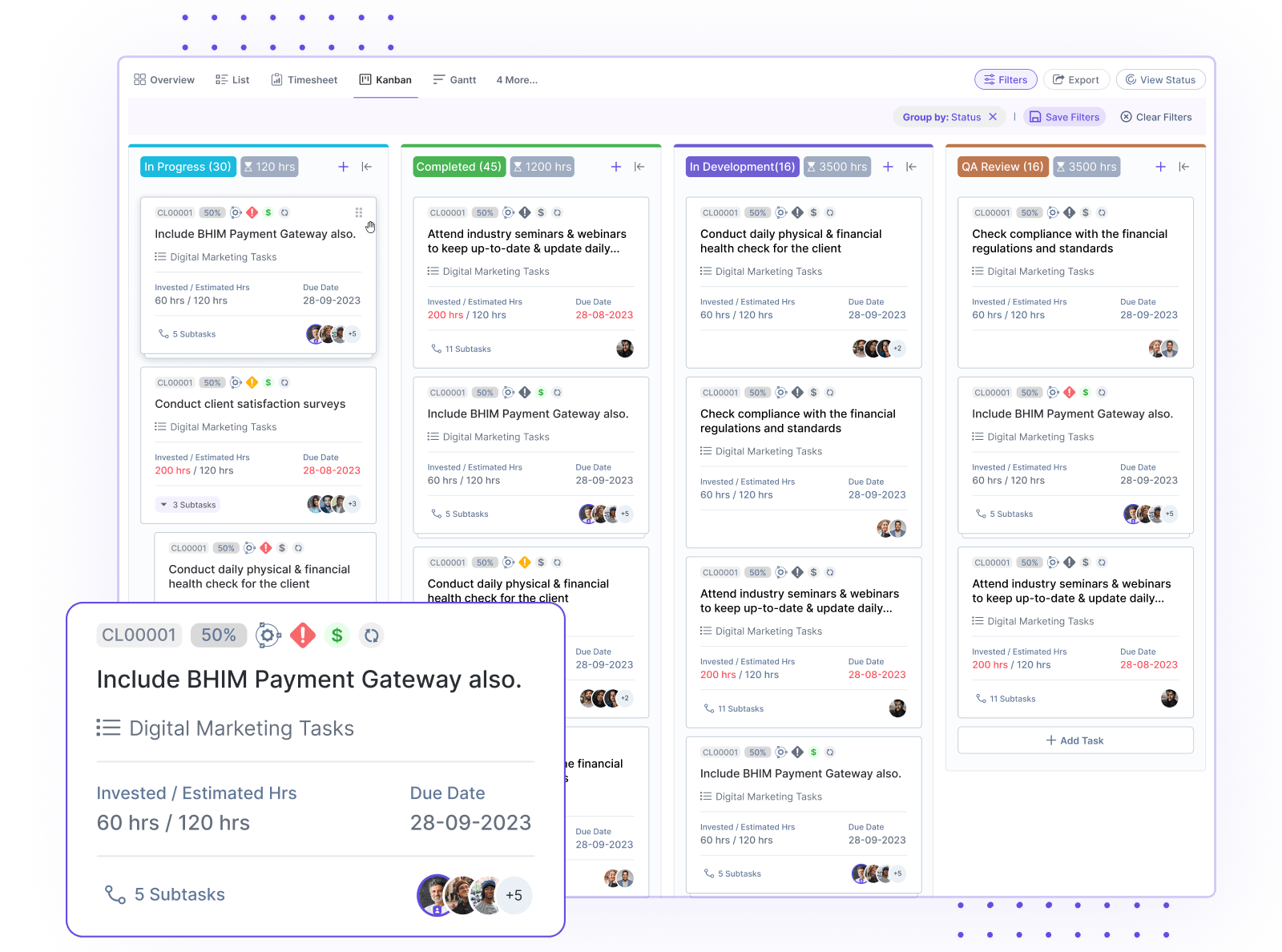
Customizable Columns: Depending on your project requirements and workflow, you can add or delete columns, such as To Do, In Progress, Completed, or any other stage applicable to your project.
Task Cards: Kanban tasks are represented by cards that can be easily dragged to the needed columns, making it convenient to see the task status and make changes if necessary.
Work-in-Progress (WIP) Limits: For each column, specify WIP maximums to avoid task overload and guarantee that the team does not start new tasks before finishing the existing ones.
Drag-and-Drop Functionality: You can drag and drop the tasks, which makes the board easy to navigate and update. Everyone can quickly move the tasks from one section to the other.
Task Prioritization: Tasks can be prioritized based on deadlines, urgency, and labels so that high priorities are accomplished first.
Collaboration Tools: This tool allows team members to add comments and attach files, tag other members, and update some details of the particular task without leaving the board.
Real-Time Updates: Board changes describe the current state of deadlines and are relevant to all team members so that no one is left with an outdated view.
Analytics and Reporting: Workstatus comes with default reports that make it easy to monitor staff activities, note the extent of workload completion, and identify areas of congestion.
Integration with Other Tools: It also synchronizes well with other project management tools to help in efficient data exchange and task harmonization between different software.
Mobile Access: The Kanban board is a web application and can be used on mobile devices. This allows teams to work on projects and track progress from their mobile devices.
Following these steps, you can create a fully functional Kanban board in Workstatus that helps you visualize your tasks, stay organized, and manage your workflow more efficiently.
Fundamental Practices of Kanban Methodology
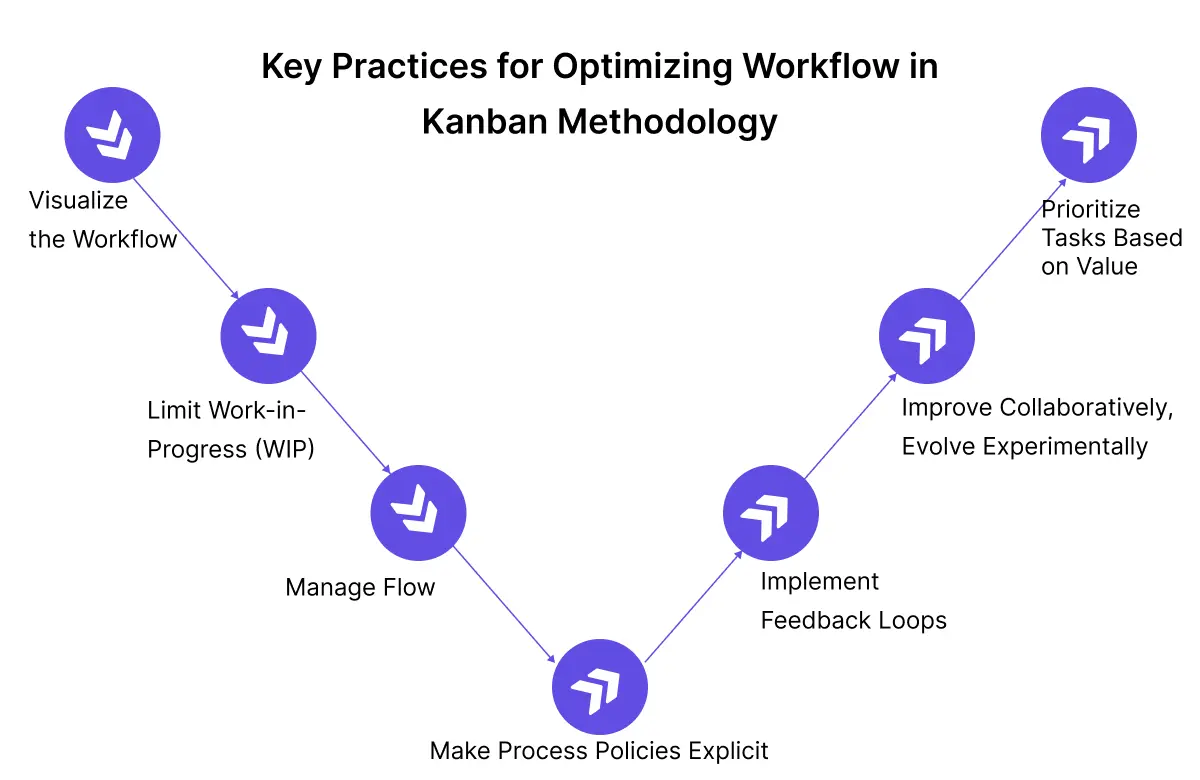
Kanban relies on core practices to enhance workflow efficiency and drive continuous improvement. Here’s a brief overview of the critical practices:
Visualize the Workflow: Create a Kanban board to visualize tasks through stages like “To Do,” “In Progress,” and “Completed.” This transparency improves communication and keeps everyone aligned.
Limit Work-in-Progress (WIP): Set WIP limits for each column to avoid overloading the team and ensure focus on completing tasks before starting new ones.
Manage Flow: Focus on maintaining a smooth flow of tasks through the stages. Continuously monitor for bottlenecks and optimize task movement to keep work progressing steadily.
Make Process Policies Explicit: Define clear and visible process rules for handling tasks and moving through the workflow, ensuring consistency and alignment across the team.
Implement Feedback Loops: Regular check-ins, like daily standups or retrospectives, help identify improvements and optimize workflows based on feedback and data.
Improve Collaboratively, Evolve Experimentally: Encourage minor, incremental improvements and experimentation to refine processes over time.
Prioritize Tasks Based on Value: Focus on high-priority tasks to maximize value, ensuring important work is tackled first.
By following these practices, teams can optimize their workflow, improve efficiency, and foster continuous improvement.
Examples of Kanban Boards
Here are some examples of Kanban boards:
Software Development Kanban Board
- To Do: List new features, bugs, and tasks to develop.
- In Progress: Developers are currently working on tasks.
- Code Review: Completed tasks awaiting peer review or quality checks.
- Testing: Tasks that are being tested for bugs and performance.
- Completed: Features, fixes, or fully developed and deployed tasks.
Marketing Campaign Kanban Board
- Planning: Campaign ideas, target audience research, and strategy planning.
- Content Creation: Tasks for writing blog posts, designing ads, etc.
- Approval: Content that needs to be reviewed by stakeholders or managers.
- Scheduled: Approved content scheduled for distribution or posting.
- Launched: Campaigns that are live and being tracked for results.
Customer Support Kanban Board
- New Requests: New tickets or requests that need to be addressed.
- In Progress: Issues being handled by customer support agents.
- Escalated: Requests that need further assistance or escalation to a higher tier of support.
- Resolved: Closed tickets or resolved customer issues.
- Feedback: Collecting customer feedback or follow-up information.
Product Management Kanban Board
- Backlog: Product ideas, feature requests, and tasks waiting to be prioritized.
- To Do: Features or improvements that are ready to be worked on.
- In Progress: Features are being developed or are being reviewed.
- Beta Testing: Features that are being tested with users.
- Released: Finished features that are fully deployed and live.
Content Development Kanban Board
- Ideas: Content ideas, topics, or research waiting to be written.
- Drafting: Content currently being written or created.
- Review: Drafts that are under review or editing.
- Final Approval: Content awaiting final approval from stakeholders or editors.
- Published: Completed content that has been published or released.
Closing Thoughts
There, you have all the essential information about Kanban methodology summarized on one slick board (not literally).
It applies to managing your software development team, creating your marketing strategy, or taming the inevitable daily insanity.
But wait, it gets better! If you want to prepare your organization to adopt project management Kanban board efficiently, tools like Workstatus are available to help. Now, with the feature-rich and easy-to-use Workstatus, your Kanban boards can be delightful and chock full of valuable tools and features.
Thus, to get the most out of Kanban, remember that everyone starts somewhere, should start small, improve gradually, and always remember the WIP limits.
And now, rule your tasks one beautifully visualized card at a time.
FAQs
Ques. What is the primary purpose of Kanban methodology?
Ans. Kanban is an effective system that enhances organizational productivity and the objectivity of definite team tasks. It assists teams in working better to accomplish their goals promptly, but the teams remain open to change.
Ques. Is Kanban suitable for all types of projects?
Ans. While Kanban is versatile and can be applied to many projects, it’s particularly effective for ongoing, repetitive tasks or projects with shifting priorities. Industries like software development, customer support, marketing, and even healthcare often benefit the most from Kanban’s adaptability.
Ques. Can Kanban help manage remote teams?
Ans. Yes, especially with digital tools like Workstatus. Online Kanban boards make it easy to collaborate, monitor progress, and align remote teams, regardless of their physical location.




